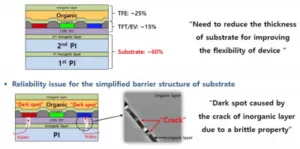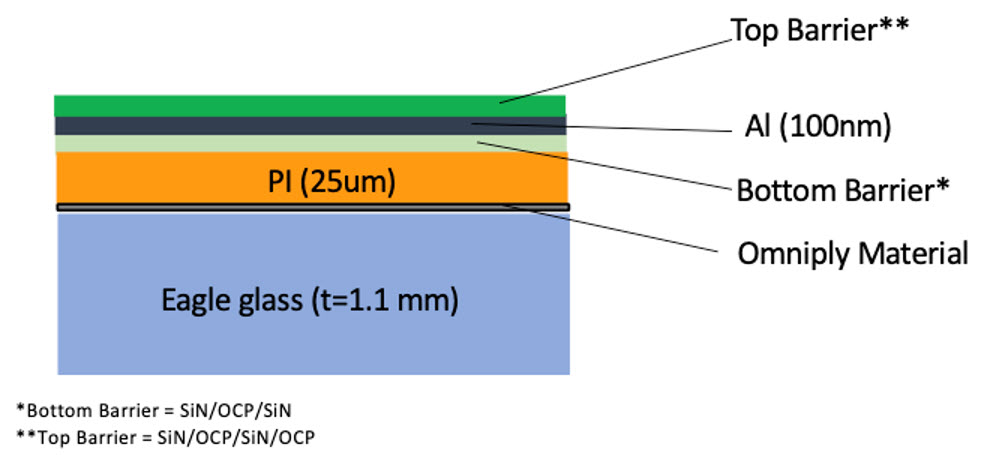OLED flexible panel makers use a glass carrier to hold the polyimide (P)I substrate during the array process and subsequently during the deposition process. Between the PI and the glass carrier is a sacrificial layer, which is hit with a laser after thin film encapsulation (TFE), to separate the two layers.
The lasers used after the TFE process are made by Coherent, the same company that supplies the excimer lasers for the conversion of a-Si to LTPS. Two companies make the LLO tools. Two companies provide the tool.
- Philoptics separates the completed flexible display from the glass, before the module process using the Coherent laser.
- Wonik builds the chamber where the two layers are separated at the cathode layer. The equipment is installed inside the evaporator as the last step of the evaporating process before encapsulation, but is only for the displays with HIAA (hole in the active area). The laser is made by IPG Photonics and the equipment is supplied by Philoptics
The LLO process developed by Samsung Display (SDC) and Philoptics has been adopted by most OLED flexible panel makers. After a rough beginning, where the yields were unacceptable, the process was fine-tuned and resulted in near 100% yields. LLO has been the long term solution but recently, a start-up Omniply Technology has developed an alternative solution that is less expensive in terms of capex, operations cost and is more effective, by using a proprietary material called Omniply™, which can be simply peeled off to separate the glass from the PI as shown below. The material coated on the glass is the same; in bottom example they leave the coating on the glass for re-use and only peel the OLED stack; in the example on the top, they peel the entire thing including the coating which now acts as a moisture barrier for the flexible OLED (apart from moisture barrier properties, there could be some cost savings as well).
The process shown at the right side of the next figure show 2 alternative peeling approached. The catalyst is same but where it is applied is different, so it can peel the coating or leave it behind.
 Figure 1: Omniply Peel Process Source:Omniply
Figure 1: Omniply Peel Process Source:Omniply
The approach also can add to the functionality of increasing the moisture barrier without the need for a second PI layer as shown below. The existing approach for barrier management is to use two PI layers sometimes separated by an organic layer, which more than doubles the thickness of the substrate and the cost. An alternative approach is to replace the two layers with a thicker PI layer, but the barrier efficiency is reduced.
The Omniply tool is being evaluated by flexible OLED panel makers to either replace LLO or for installation in a new flexible fab. Omniply claims the capex is 1/3 the capex of the LLO laser tool. The Omniply process could also be used as a low cost replacement for TFE if the company can develop a high transparency barrier layer (s). (BY)
Edits to this article were made after publication to the first section of this article to clarify the process. We also removed comments received from another analyst in the area that suggested that there were mistakes in the article. We should not have done that without referring those comments to the original author and we apologise to Barry Young for any inconvenience caused by that inclusion.
Barry Young is the CEO of the OLED Association
This article has been moved outside the paywall by Omniply. Thanks to them.



